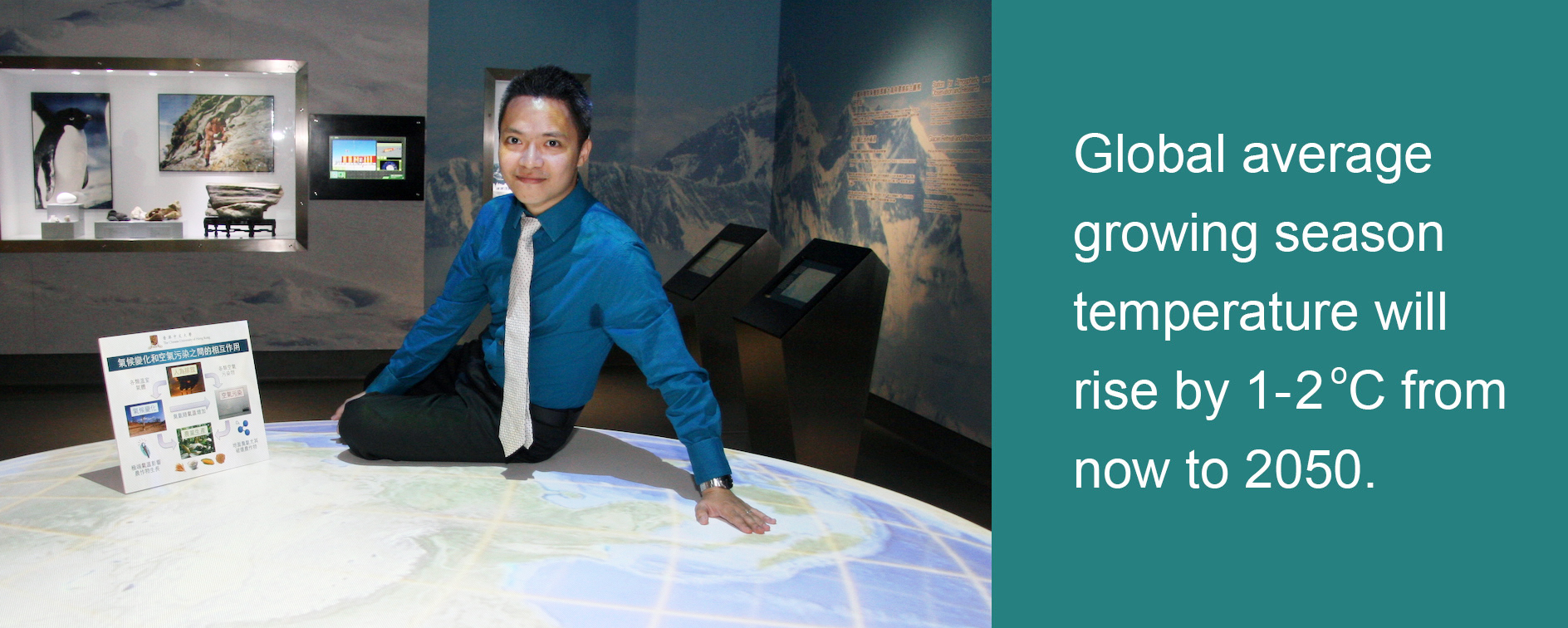
Pose Threats to Future Global Food Security

Professor Amos Pui-kuen TAI has used a sophisticated computer model to project that in the next few decades, climate change and uncontrolled air pollution together may severely damage global crop production and increase undernourishment rates, posing a serious threat to global food security and public health…
Explore More
What’s New?
Professor Tai’s latest research discovered that that future warming and unmitigated ozone pollution can combine to cause an average decline in US wheat, maize and soybean production by 13%, 43% and 28% respectively, by using the Partial Derivative-Linear Regression derived sensitivities and 2000–2050 ozone and temperature projections by the Community Earth System Model.
Fortunately, the findings suggested that aggressive ozone regulation can offset such decline to various extents, especially for wheat. To enhance future food security in response to imminent environmental threats, it is important to consider ozone regulation as well as ozone and climate change adaptation (e.g. selecting heat- and ozone-tolerant cultivars, irrigation) as possible strategies.
Research findings were published in:
Nature Climate Change, the first-ranked international journal in the field of climate and environmental sciences.
Tai, A. P. K., Martin, M. V., & Heald, C. L. (2014). Threat to future global food security from climate change and ozone air pollution. Nature Climate Change, 4(9), 817.
Read Full-text Article
Atmospheric Environment, an internationally renowned journal covering research on air pollution and other ways humans and natural forces affect the Earth’s atmosphere.
Tai, A. P. K., & Martin, M. V. (2017). Impacts of ozone air pollution and temperature extremes on crop yields: Spatial variability, adaptation and implications for future food security. Atmospheric Environment, 169, 11-21.
Read Full-text Article


